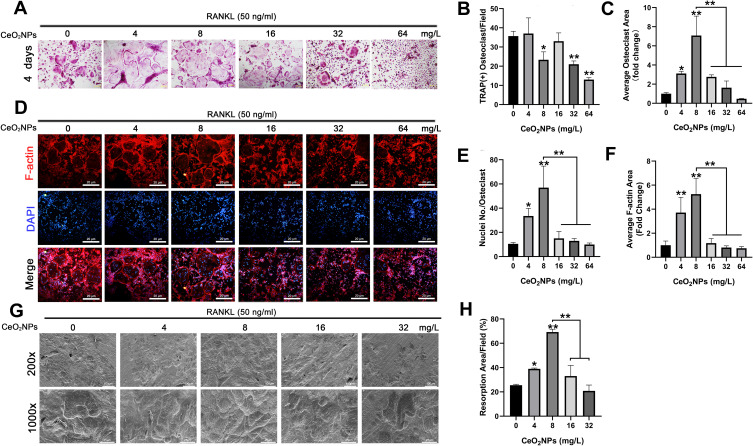Figure 3.
CeO2NPs modulate RANKL-dependent osteoclastogenesis in vitro by facilitating osteoclast formation at lower concentrations and inhibiting osteoclastogenesis at higher concentrations.
Notes: (A) Representative images of TRAP staining. BMMs were stimulated with RANKL (50 ng/mL) for 4 days in the absence or presence of various concentrations of CeO2NPs. Scale bar = 8 µM. (B) Quantification of TRAP-positive multinucleated osteoclasts that were treated with different concentrations of CeO2NPs for 4 days. (C) Quantification of the average area of TRAP-positive multinucleated osteoclasts in different groups. (D) Representative images of increased F-actin ring formation in osteoclasts that were treated with lower concentrations of CeO2NPs (4 and 8 mg/L) and impaired F-actin ring formation in osteoclasts that were treated with higher concentrations of CeO2NPs (16, 32, and 64 mg/L). Scale bar = 20 µM. (E) Quantification of the number of nuclei per osteoclast. (F) Quantification of the relative area of the F-actin ring of osteoclasts. (G) Representative SEM images of bone resorption after treatment with different concentrations of CeO2NPs for 14 days. Scale bar = 100 µM (H) Quantification of resorbed bone slice area in the different groups. All bar graphs are presented as the mean ± SD. *Indicates p<0.05 compared with the control group (0 mg/L, RANKL+). **Indicates p<0.01 compared with the control group (0 mg/L, RANKL+).

